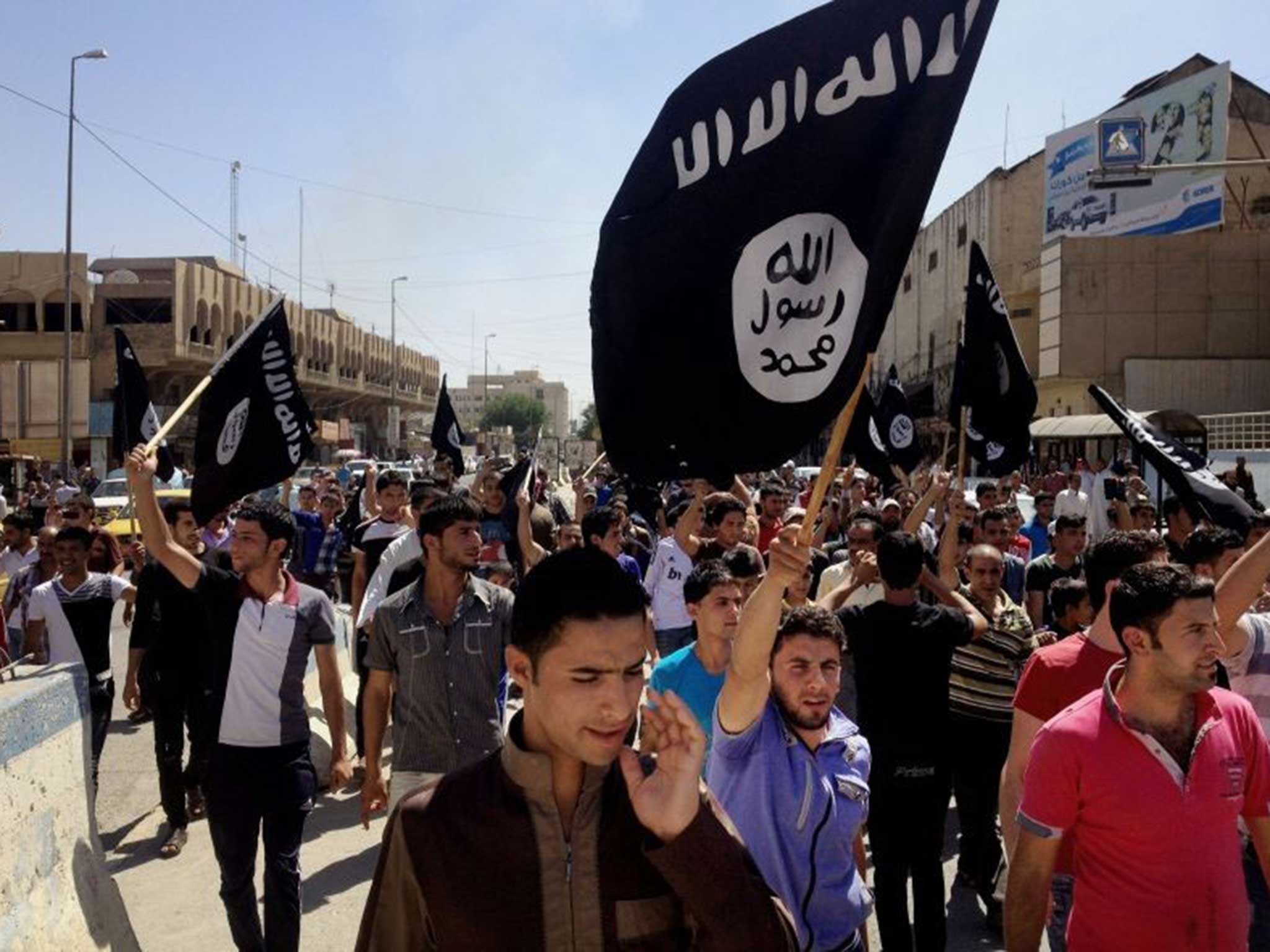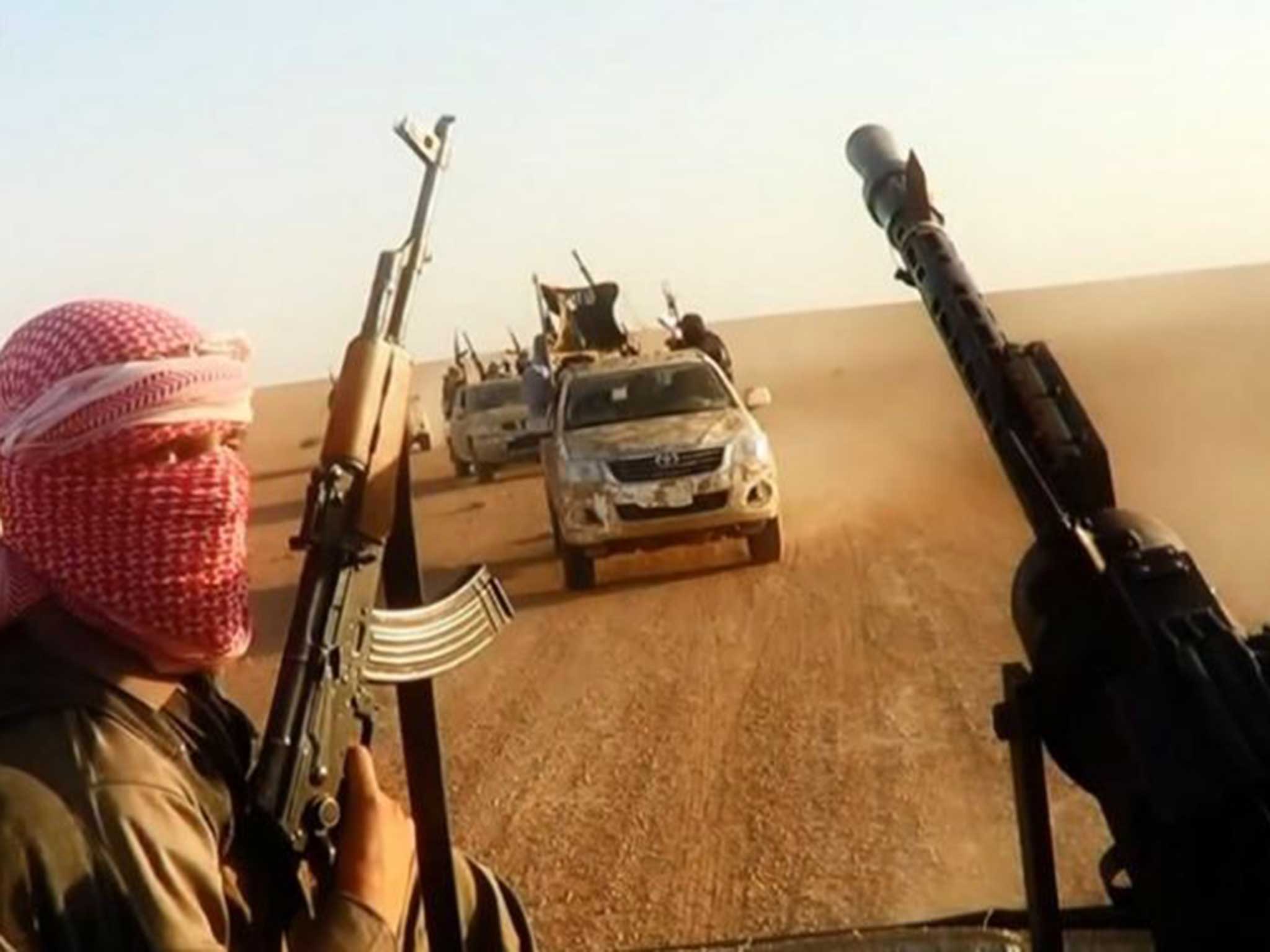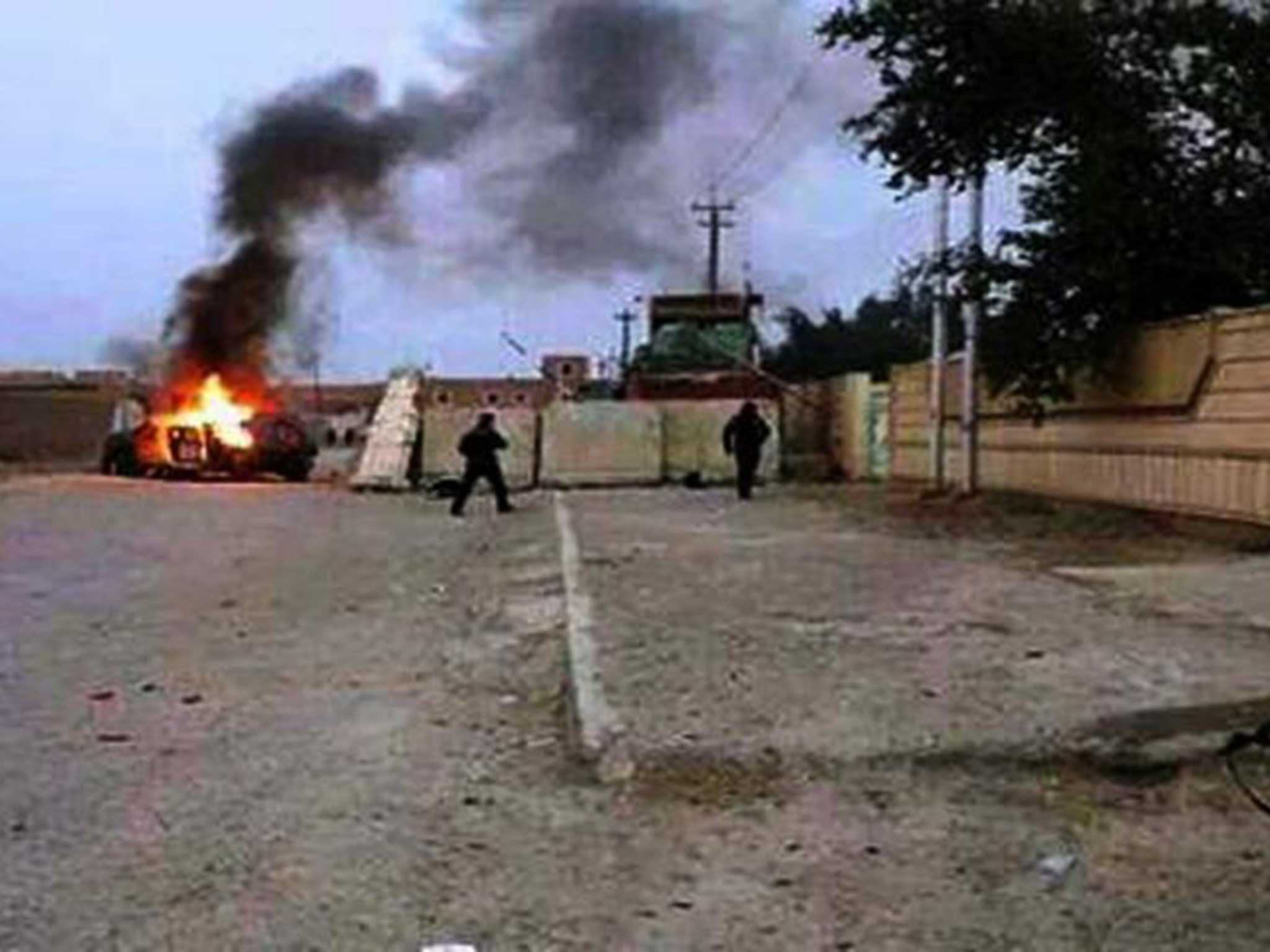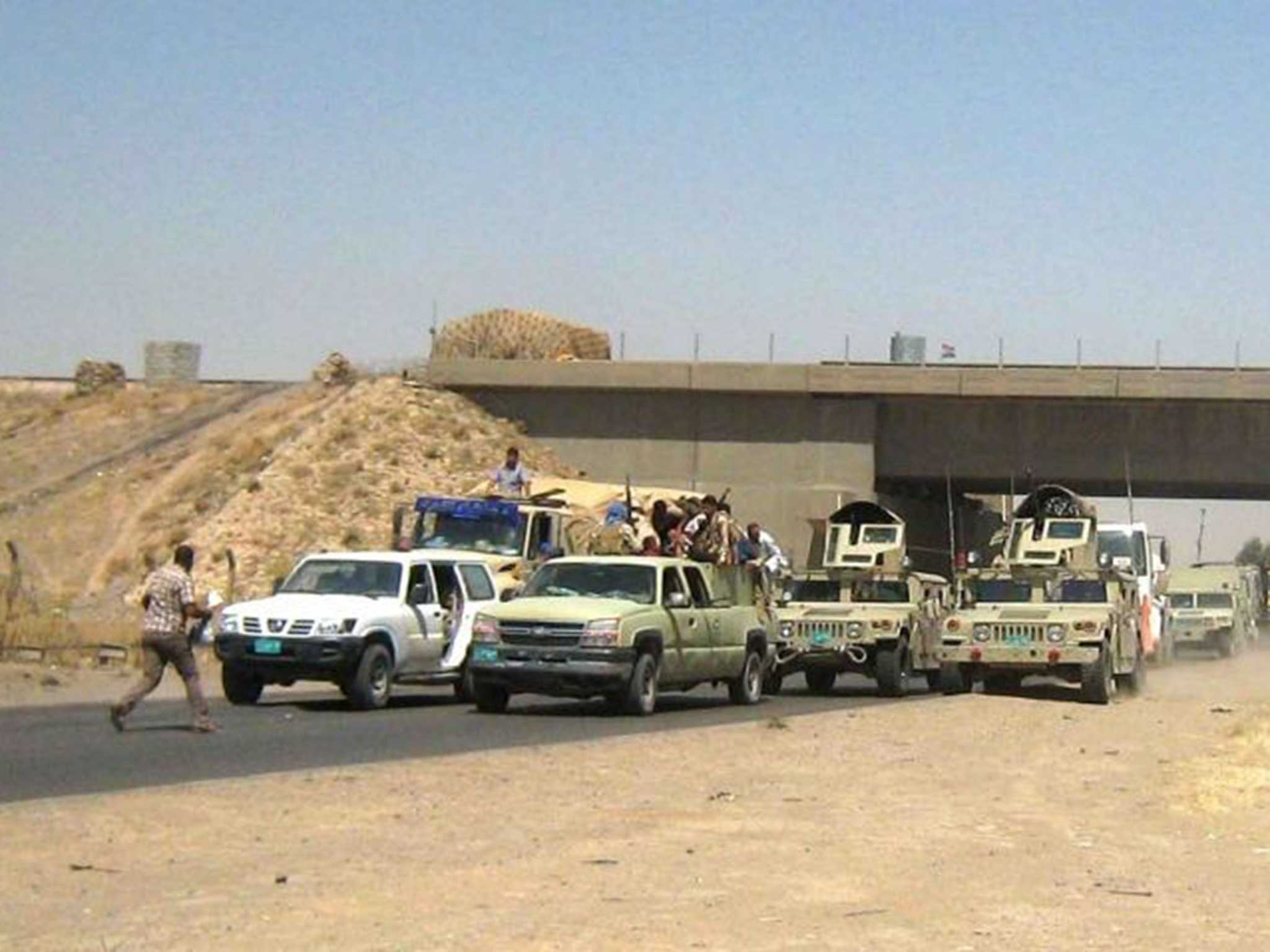Crisis in the Middle East: The end of a country, and the start of a new dark age
In a new book, our veteran correspondent documents the forces that wreaked havoc on an entire region. Here is an exclusive extract


Iraq has disintegrated. Little is exchanged between its three great communities – Shia, Sunni and Kurd – except gunfire. The outside world hopes that a more inclusive government will change this but it is probably too late.
The main victor in the new war in Iraq is the Islamic State of Iraq and the Levant (Isis) which wants to kill Shia rather than negotiate with them. Iraq is facing a civil war that could be as bloody as anything that we have seen in Syria and could go on for years.
The crucial date in this renewed conflict is 10 June, 2014 when Isis captured Iraq's northern capital, Mosul, after three days' fighting. The Iraqi government had an army with 350,000 soldiers on which $41.6bn (£25bn) had been spent in the three years from 2011, but this force melted away without significant resistance.
Discarded uniforms and equipment were found strewn along the roads leading to Kurdistan and safety. The flight was led by commanding officers, some of whom rapidly changed into civilian clothes as they abandoned their men. Given that Isis may have had as few as 1,300 fighters in its assault on Mosul this was one of the great military debacles in history.
Within two weeks those parts of northern and western Iraq outside Kurdish control were in the hands of Isis. By the end of the month the group had announced a caliphate straddling the Iraq-Syria border.
People in Baghdad are used to shocks after years of war, massacres, occupation and dictatorship, but when Mosul fell they could feel the ground shifting under their feet. Soon Isis fighters were only an hour's drive north of a capital in which the streets, normally choked with traffic, grew quiet as people stayed at home because they thought it too dangerous to go out.
This was particularly true of Sunni districts such as al-Adhamiyah on the east bank of the Tigris River, where young men rightly believed that if they passed through a checkpoint they were likely to be arrested or worse. People watched television obsessively, nervously channel-hopping as they tried to tease out the truth from competing propaganda claims.
The sense of crisis was made worse by the main government channel broadcasting upbeat accounts of the latest victories, though the claims were seldom backed up by pictures. "Watch enough government television and pretty soon you would decide there is not a single member of Isis in the country," said one observer.

The political geography of Iraq was changing before its people's eyes and there were material signs of this everywhere. Baghdadis cook on propane gas because the electricity supply is so unreliable but soon there was a chronic shortage of gas cylinders because they come from Kirkuk and the road from the north had been cut by Isis fighters. To hire a truck to come the 200 miles from the Kurdish capital Erbil to Baghdad now cost $10,000 for a single journey, compared to $500 a month earlier.
There were ominous signs that Iraqis feared a future filled with violence as weapons and ammunition soared in price. The cost of a bullet for an AK47 assault rifle quickly tripled to 3,000 Iraqi dinars, or about $2. Kalashnikovs were almost impossible to buy from arms dealers, though pistols could still be obtained at three times the price of the previous week. Suddenly, almost everybody had guns, including even Baghdad's paunchy, white-shirted traffic police who began carrying sub-machine guns.
Many of the armed men who started appearing in the streets of Baghdad and other Shia cities were Shia militiamen, some from Asaib Ahl al-Haq, a splinter group from the movement of Shia populist and nationalist cleric Muqtada al-Sadr. This organisation is partly controlled by the Prime Minister Nouri al-Maliki and, it is generally assumed, by the Iranians. It was a measure of the collapse of the state security forces and the national army that the government was relying on a sectarian militia to defend the capital.
Ironically, one of Maliki's few achievements as prime minister had been to face down the Shia militias in 2008, but now he was encouraging them to return to the streets. Soon dead bodies were being dumped at night. They were stripped of their ID cards but were assumed to be Sunni victims of the militia death squads. Iraq seemed to be slipping over the edge into an abyss in which sectarian massacres and counter-massacres rivalled those during the sectarian civil war between Sunni and Shia in 2006-07.
The renewed sectarian violence was very visible. There was an appalling video of Iraqi military cadets being machine-gunned near Tikrit by a line of Isis gunmen as they stood in front of a shallow open grave. It reminded me of pictures of the SS murdering Jews in Russia and Poland during the Second World War.
Human rights organisations using satellite pictures said they estimated the number of dead to be 170 though it might have been many more. Shia who were from the Turkoman ethnic group living in villages south of Kirkuk were driven from their homes and between 15 and 25 of them were murdered. It may be that the Shia will react in kind, but so far the killings have largely been of Shia by Isis.
Isis described its military strategy as "moving like a serpent between the rocks", in other words using its forces as shock troops to take easy targets but not getting dragged into prolonged fighting in which its fighters would be tied down and suffer heavy casualties. It picked off government garrisons in Sunni-majority districts, and in the places it captured it did not necessarily leave many of its militants behind but rather relied on local allies. Many in Baghdad and in governments across the world hoped that these allies of Isis – local tribes and local Sunni leaders – could be persuaded to split from Isis because of its violence and primeval social agenda.
In the refinery town of Baiji local people said that Isis had been going from house to house asking for the names of married and unmarried women, sometimes demanding to see ID cards, which in Iraq specify marital status. They explained they were doing this because their unmarried fighters wanted to have wives. No doubt there will be a negative reaction to this sort of activity from the local Sunni communities, but a movement that is well organised and prepared to kill any opponent will not be easy to challenge.
The rise of Isis and its military successes has led to short-sighted euphoria in Sunni countries. People congratulate themselves that it is no longer only the Shia who are on the offensive. But in practice Isis's seizure of a leadership position in Syria and Iraq's communities will most likely prove to be a disaster for them. Isis is being used as a vanguard movement that will not allow itself to be easily displaced and, like the fascists in Italy and Germany in the 1920s and 1930s, will seek to crush anybody who tries.
The Sunnis have ceded a commanding role to a movement that sees itself as divinely inspired and whose agenda involves endless and unwinnable wars against apostates and heretics. Iraq and Syria can be divided up, but they cannot be divided up cleanly and peacefully because too many minorities, like the million or more Sunni in Baghdad, are on the wrong side of any conceivable dividing line. At best, Syria and Iraq face years of intermittent civil war; at worst, the division of these countries will be like the partition of India in 1947 when massacre and fear of massacre established new demographic frontiers.
The fall of Mosul and the Isis-led Sunni revolt marks the end of a distinct period in Iraqi history that began with the overthrow of Saddam Hussein by the US and British invasion of March 2003. There was an attempt by the Iraqi opposition to the old regime and their foreign allies to create a new Iraq in which the three communities shared power in Baghdad. The experiment failed disastrously and it seems it will be impossible to resurrect it because the battle lines between Kurd, Sunni and Shia are now too stark and embittered.
The balance of power inside Iraq is changing. So too are the de facto frontiers of the state, with an expanded and increasingly independent Kurdistan – the Kurds having opportunistically used the crisis to secure territories they have always claimed – and the Iraq-Syrian border having ceased to exist. The impact of these events is being felt across the Middle East as governments take on board that Isis, an al-Qai'da-type group of the greatest ferocity and religious bigotry, has been able to claim the creation of a Sunni caliphate spanning much of Iraq and Syria.
This book focuses on several critical short- and long-term developments in the Middle East that are affecting or will soon affect the rest of the world. The most important of these is the resurgence of the al-Qa'ida-type movements that today rule a vast area in north and west Iraq and eastern and northern Syria. The area under their sway is several hundred times larger than any territory ever controlled by Osama bin Laden, the killing of whom in 2011 was supposed to be a major blow to world terrorism.
In fact, it is since bin Laden's death that al-Qa'ida affiliates or clones have had their greatest successes, including the capture of Raqqa in the eastern part of Syria, the only provincial capital in that country to fall to the rebels, in March 2013. In January 2014, Isis took over Fallujah just 40 miles west of Baghdad, a city famously besieged and stormed by US marines 10 years earlier. Within a few months they had also captured Mosul and Tikrit.
The battle lines may continue to change, but the overall expansion of their power appears permanent. With their swift and multi-pronged assault across central and northern Iraq in June 2014, the Isis militants had superceded al-Qa'ida as the most powerful and effective jihadi group in the world.

These developments came as a shock to many in the West, including politicians and specialists whose view of what was happening often seemed outpaced by events. One reason for this was that it was too risky for journalists and outside observers to visit the areas where Isis was operating because of the extreme danger of being kidnapped or murdered. "Those who used to protect the foreign media can no longer protect themselves," one intrepid correspondent told me, explaining why he would not be returning to rebel-held Syria.
The triumph of Isis in Iraq in 2013-14 came as a particular surprise because the western media had largely stopped reporting the country. This lack of coverage had been convenient for the US and other Western governments because it enabled them to play down the extent to which "the war on terror" had failed so catastrophically in the years since 9/11.
This failure is masked by deceptions and self-deceptions on the part of governments. Speaking at West Point on America's role in the world on 28 May 28 2014, President Barack Obama said that the main threat to the United States no longer came from al-Qa'ida central but from "decentralised al-Qa'ida affiliates and extremists, many with agendas focused on the countries where they operate." He added that "as the Syrian civil war spills across borders, the capacity of battle-hardened extremist groups to come after us only increases".
This was true enough, but Obama's solution to the danger was, as he put it, "to ramp up support for those in the Syrian opposition who offer the best alternative to terrorists." By June he was asking Congress for $500m to train and equip "appropriately vetted" members of the Syrian opposition. It is here that self-deception reigns, because the Syrian military opposition is dominated by Isis and by Jabhat al-Nusra (JAN), the official al-Qa'ida representative, in addition to other extreme jihadi groups. In reality, there is no dividing wall between them and America's supposedly moderate opposition allies.
An intelligence officer from a Middle East country neighbouring Syria told me that Isis members "say they are always pleased when sophisticated weapons are sent to anti-Assad groups of any kind because they can always get the arms off them by threats of force or cash payments." Western support for the Syrian opposition may have failed to overthrow Assad, but it was successfully destabilising Iraq, as Iraqi politicians had long predicted.
The importance of Saudi Arabia in the rise and return of al-Qa'ida is often misunderstood and understated. Saudi Arabia is influential because its oil and vast wealth make it powerful in the Middle East and beyond. But it is not financial resources alone that make it such an important player. Another factor is its propagating of Wahhabism, the fundamentalist 18th-century version of Islam that imposes sharia law, relegates women to second-class citizens, and regards Shia and Sufi Muslims as heretics and apostates to be persecuted along with Christians and Jews.
This religious intolerance and political authoritarianism, which in its readiness to use violence has many similarities with European fascism in the 1930s, is getting worse rather than better. A Saudi who set up a liberal website on which clerics could be criticised was recently sentenced to a thousand lashes and seven years in prison.

The ideology of al-Qa'ida and Isis draws a great deal from Wahhabism. Critics of this new trend in Islam from elsewhere in the Muslim world do not survive long; they are forced to flee or murdered. Denouncing jihadi leaders in Kabul in 2003, an Afghan editor described them as "holy fascists", who were misusing Islam as "an instrument to take over power". Unsurprisingly, he was accused of insulting Islam and had to leave the country.
A striking development in the Islamic world in recent decades is the way in which Wahhabism is taking over mainstream Sunni Islam. In one country after another Saudi Arabia is putting up the money for the training of preachers and the building of mosques. A result of this is the spread of sectarian strife between Sunni and Shia. The latter find themselves targeted with unprecedented viciousness from Tunisia to Indonesia. Such sectarianism is not confined to country villages outside Aleppo or in the Punjab, it is poisoning relations between the two sects in every Islamic grouping. A Muslim friend in London told me: "Go through the address books of any Sunni or Shia in Britain and you will find very few names belonging to people outside their own community."
The resurgence of al-Qa'ida-type groups is not a threat confined to Syria, Iraq, and their near neighbours. What is happening in these countries, combined with the increasing dominance of intolerant and exclusive Wahhabite beliefs within the worldwide Sunni community, means that all 1.6 billion Muslims, almost a quarter of the world's people, will be increasingly affected. Furthermore, it seems unlikely that non-Muslim populations, including many in the West, will be untouched by the conflict. Today's resurgent jihadism, which has shifted the political terrain in Iraq and Syria, is already having far-reaching effects on global politics with dire consequences for us all.
This is an extract from 'The Jihadis Return: Isis and the New Sunni Uprising', by Patrick Cockburn, published by OR Books, available exclusively at orbooks.com
Join our commenting forum
Join thought-provoking conversations, follow other Independent readers and see their replies
Comments